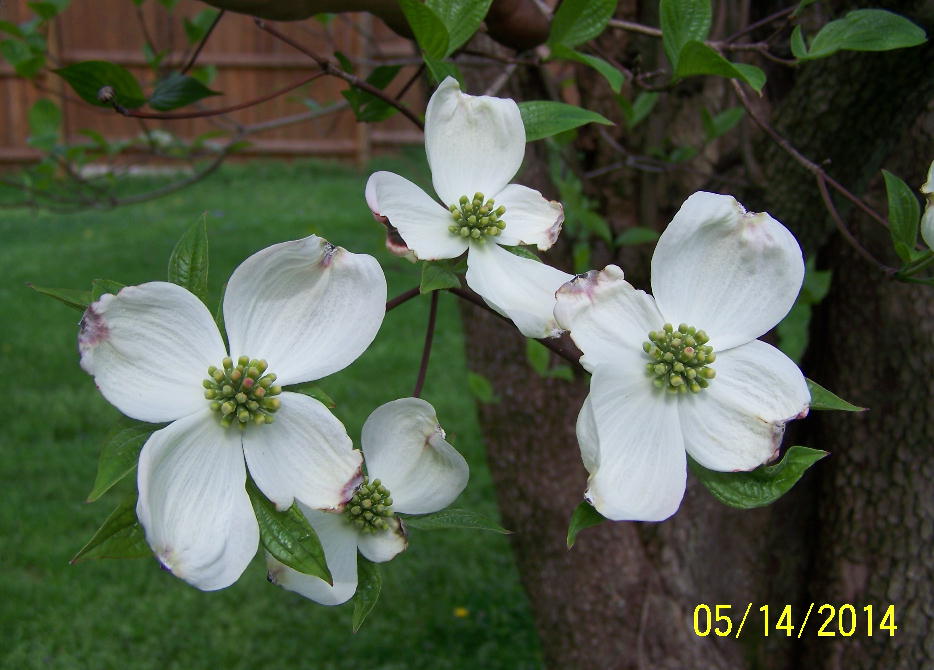Native Plants
Native Plants
Native plants are defined in different ways. Some define them as plants you would find growing in a field or woods years ago before all the imported plants were introduced into landscapes.
Some think plants that were growing in North America are the natives while others only consider local plants as native. Nowadays there are varieties that have been developed using plants found in North America and “improved” upon. We call them nativars.
Improvements to native plants
Some have more flowers or more available colors. Size and fullness have been improved in others. There are now natives for the landscape, not just woods or fields. These are known as nativars.
We grow and sell several native plants, shrubs, and trees. The varieties that we sell include some of the “improved” and changed types.
While most of these won’t be found growing locally, they are hardy to our growing zone. Native plants and flowers attract and support local insects and wildlife better than some imports.
Just because a shrub or tree gets berries or fruit, doesn’t mean the birds or animals will eat them. Fruits from native plants are usually eaten quickly.
From currants and dogwood trees to grasses, viburnums, cardinal flowers and more take a look and see what native plants can do for your landscape.
Some of the Native Plants we may have available here are:
- Sunburst St. John’s Wort
- Creel’s Gold St. John’s Wort
- Common Snowberry
- Nugget Ninebark
- Monlo Ninebark
- Emerald Green Arborvitae
- Little Giant Arborvitae
- Green Giant Arborvitae
- Ruby Slippers Oakleaf Hydrangea
- Ruby Spice Summersweet
- Sixteen Candles Summersweet
- Blue Rug Juniper
- Goldfinger Potentilla
- Bridal Wreath Spirea
- Amethyst Falls Wisteria
Cardinal Flower

Cardinal Flower
Lobelia cardinalis
2 to 4 feet high and 1 to 2 feet wide
Full sun/part shade
Bright red flowers, favorite among hummingbirds. Grows well in wet soil.
White Fringetree
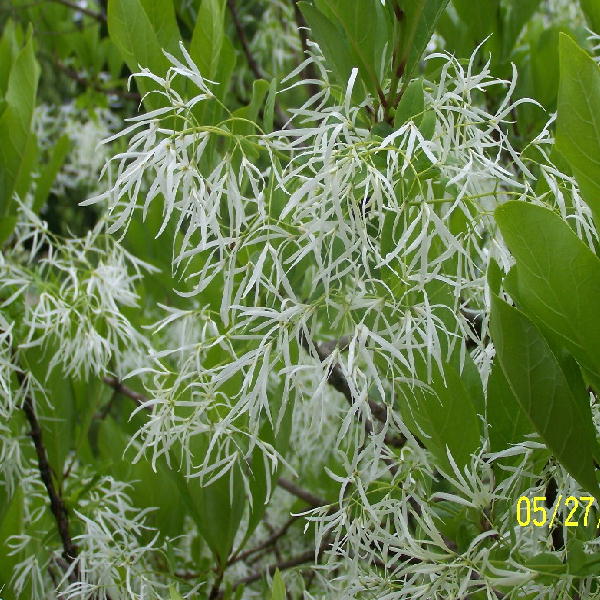
White Fringetree
Chionanthus virginicus
12 to 20 feet high and 12 to 20 feet wide
Full sun/part shade
Creamy white flowers that look like fringe. Very showy and fragrant.
White Dogwood tree
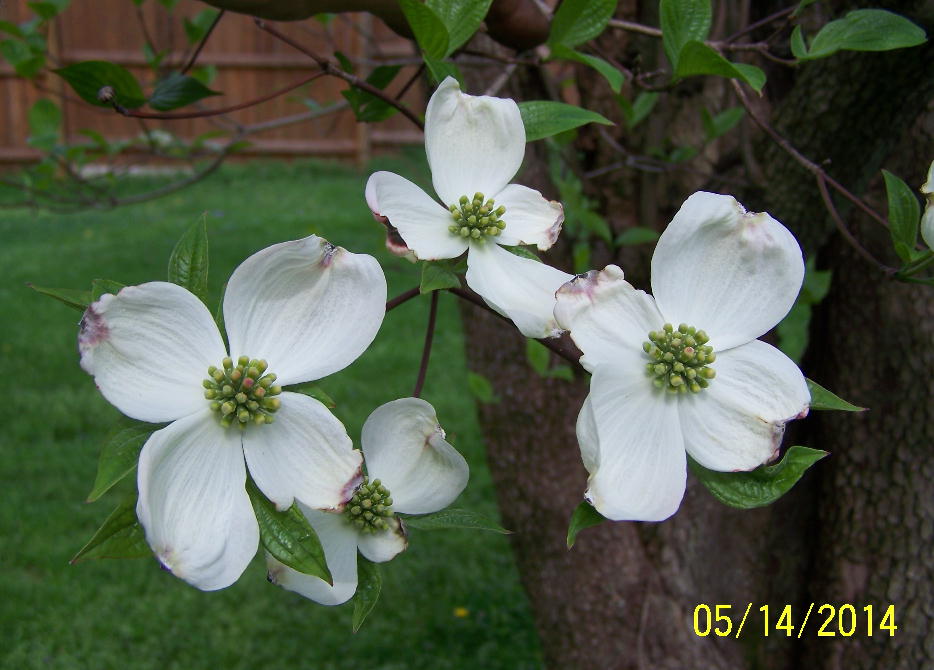
White Dogwood tree
Cornus florida
15 to 30 feet high and 15 to 30 feet wide
Full sun/part shade
Showy white flower bracts in spring. Red fruits in fall are bird favorites.
Possumhaw Viburnum
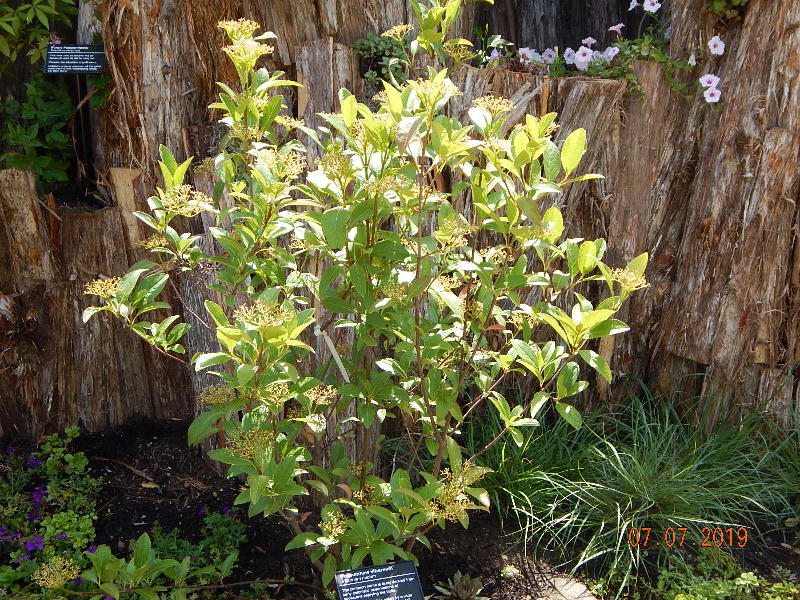
Possumhaw Viburnum
Viburnum nudum ‘Winterthur’
5 to 7 feet high and 5 to 7 feet wide
Full sun/part shade
Aromatic white flowers in flat clusters. Dark berries follow in fall. Must have more than one plant.
Cranberry Viburnum

Cranberry Viburnum
Viburnum trilobum
8 to 12 feet high and 8 to 12 feet wide
Full sun/part shade
Showy white flower clusters followed by red edible berries.
Turtleheads
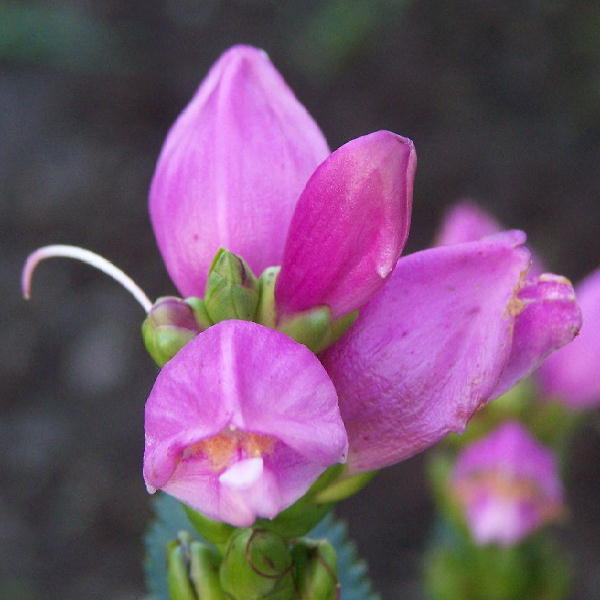
Turtleheads
Chelone obliqua
2 to 3 feet high and 1 to 2 feet wide
Full sun/part shade
Upright plant with lots of pink blooms that look like a turtle with its head sticking out. Likes wet areas, even bogs.
Rusty Blackhaw Viburnum

Rusty Blackhaw Viburnum
Viburnum rufidulum
10 to 20 feet high and 10 to 20 feet wide
Full sun/part shade
Clusters of small white flowers followed by dark blue fruits.
Henry’s Garnet Sweetspire
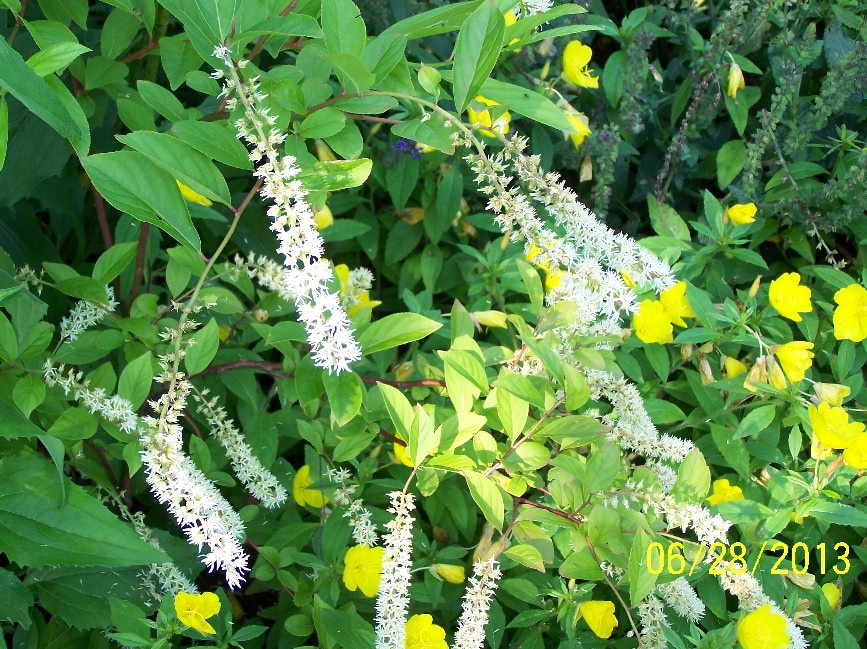
Henry’s Garnet Sweetspire
Itea virginica ‘Henry’s Garnet’
3 to 4 feet high and 4 to 6 feet wide
Full sun/part shade
Long, slender white flowers on arching branches. Dark burgundy colors in fall.
Red Chokeberry
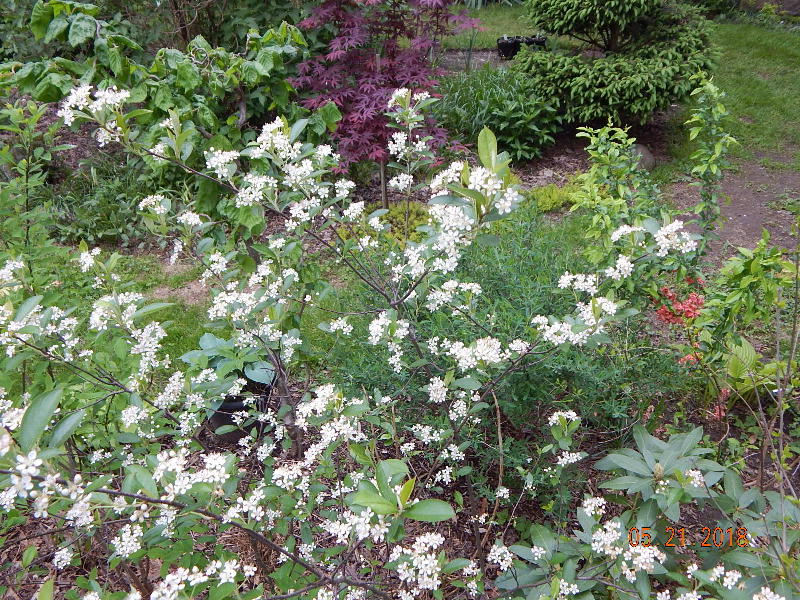
Red Chokeberry
Aronia arbutifolia ‘Brilliantissima’
6 to 8 feet high and 3 to 4 feet wide
Full sun/part shade
Clusters of white to pink flowers. Lots of red berries and red foliage in fall.
Black Chokeberry

Black Chokeberry
Aronia melanocarpa
3 to 6 feet high and 3 to 6 feet wide
Full sun/part shade
Clusters of white to pink flowers. Lots of large black berries are good for jams and jellys. They are a superfood.
Purple Coneflower
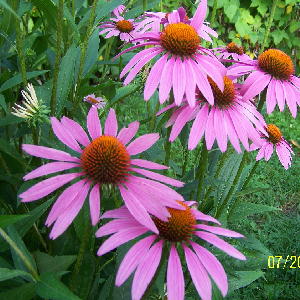
Purple Coneflower
Echinacea purpurea
2 to 4 feet high and 1 to 2 feet wide
Full sun/part shade
Light purple petals with an orange spiny center. Butterfly magnet. Leave flowers to go to seed for finches.
Spiderworts
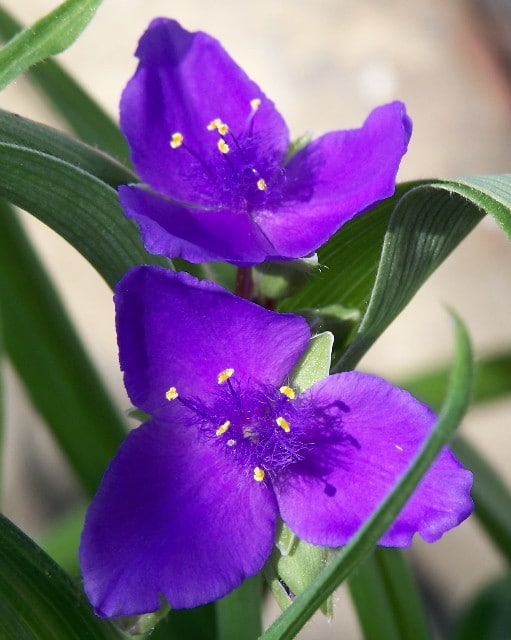
Spiderworts
Tradescantia virginiana
18 to 24 inches high and 1 to 3 feet wide
Full sun/part shade
Purple 3 petaled flowers with grass-like foliage.
Annabelle Hydrangea
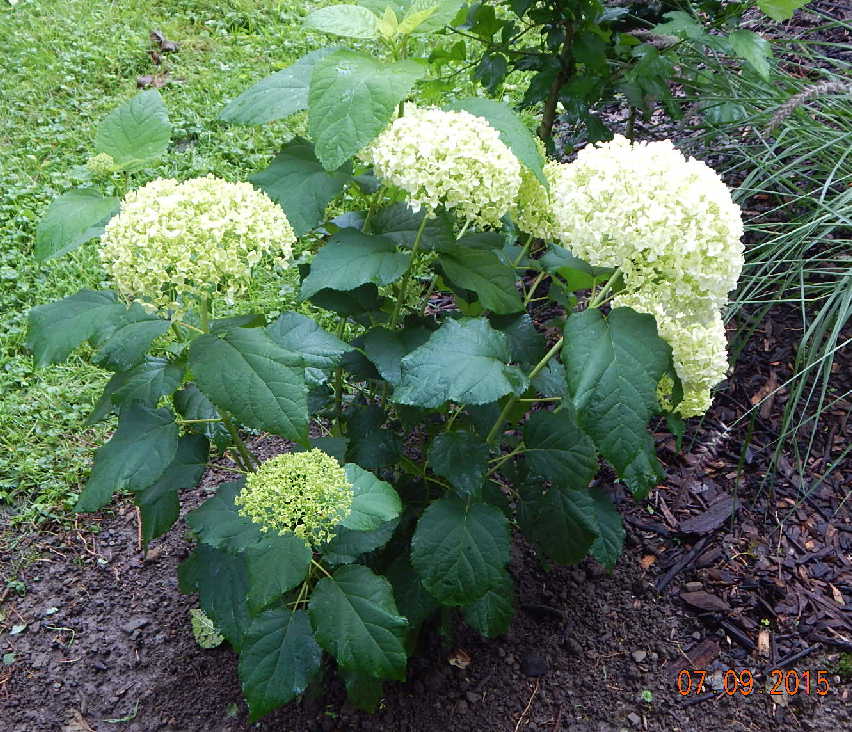
Annabelle Hydrangea
Hydrangea arborescens ‘Annabelle’
3 to 5 feet high and 3 to 4 feet wide
Partial shade
Very large rounded flowerheads of a white bloom on ends of the new stems. Do best with some kind of support to hold up the large number of flowers.
Hummingbird Summersweet

Hummingbird Summersweet
Clethra alnifolia ‘Hummingbird’
3 to 4 feet high and 3 to 4 feet wide
Full sun/part shade
Rounded bush with white bottle-brush type flowers that are very fragrant. Flowers in summer and really attracts pollinators. Flowers just as well in partial shade.
Ruby Spice Summersweet
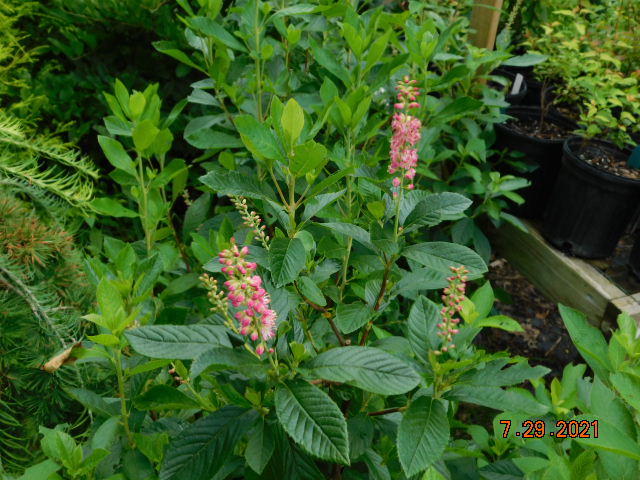
Ruby Spice Summersweet
Clethra alnifolia ‘Ruby Spice’
4 to 6 feet high and 3 to 4 feet wide
Full sun/part shade
Taller and more narrow version of clethra. The fragrant bottle-brush flowershave heavy pink overtones. Flowers in summer for a fragrant addition to your yard.
Sixteen Candles Summersweet
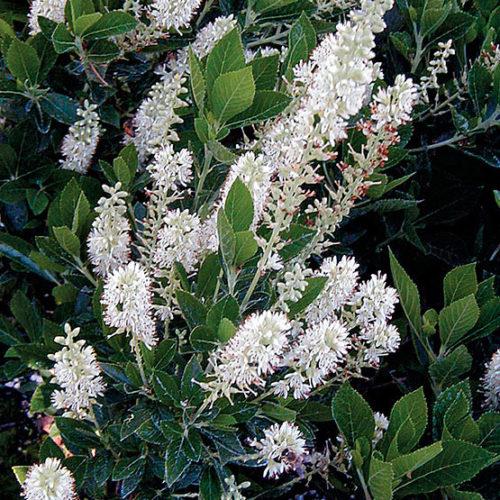
Sixteen Candles Summersweet
Clethra alnifolia ‘Sixteen Candles’
3 to 5 feet high and 3 to 4 feet wide
Full sun/part shade
Newer verion of this sweet smelling native shrub. Taller white bottle-brush flowers have a super sweet fragrance that draws in the pollinators and butterflies, as well as passersby.
Sunburst St. John’s Wort
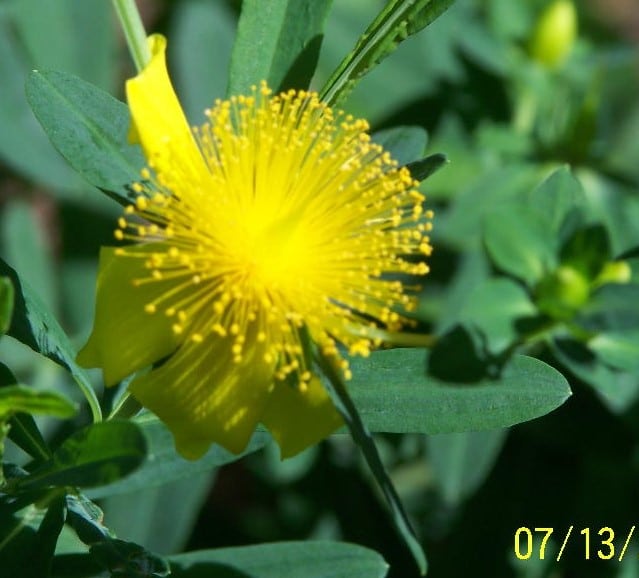
Sunburst St. John’s Wort
Hypericum frondosum ‘Sunburst’
3 to 4 feet high and 3 to 4 feet wide
Full sun/partial shade
Very narrow leaves on wiry stems. Large brilliant yellow flowers have pom pom center.
Creel’s Gold St. John’s Wort
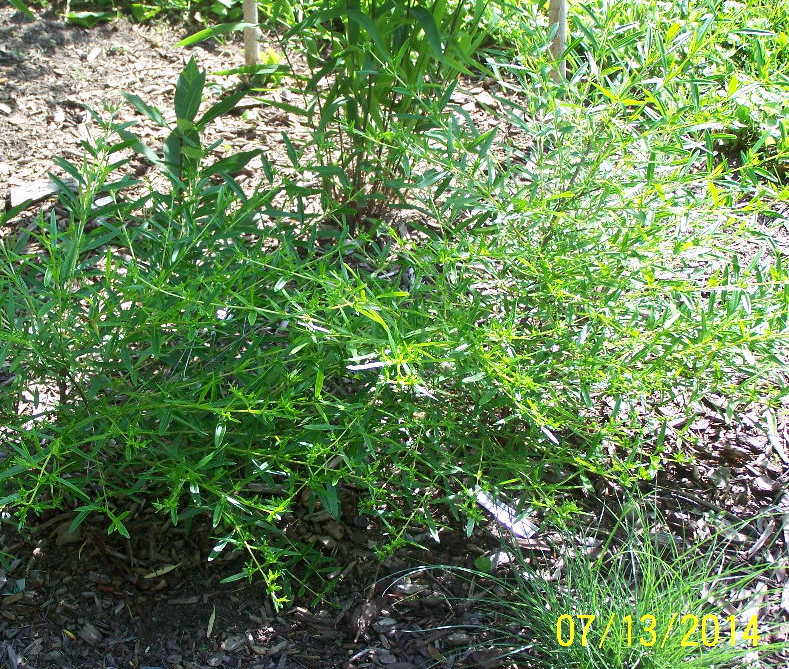
Creel’s Gold St. John’s Wort
Hypericum densiflorum ‘Creels Gold’
3 to 5 feet high and 3 to 5 feet wide
Part shade
Very narrow leaves on wiry stems. Brilliant yellow flowers with fine pom pom center.
Common Snowberry
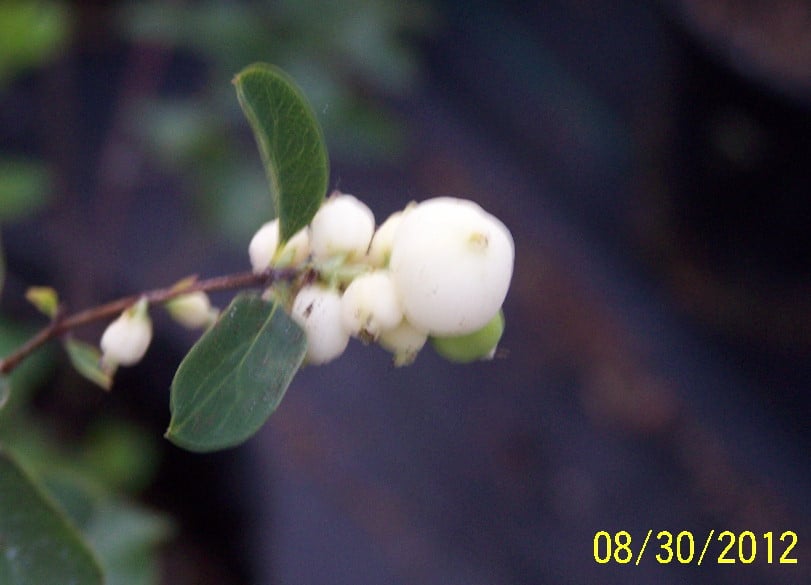
Common Snowberry
Symphoricarpos albus laevigatus
4 to 6 feet high and 4 to 6 feet wide
Full sun/partial shade
A thin, branchy shrub that has very small pink and white bell-shaped flower. Late summer into fall, these turn into clusters of soft white berries of varying diameters.
Nugget Ninebark

Nugget Ninebark
Physocarpus opulifolius ‘Nugget’
4 to 6 feet high and 3 to 5 feet wide
Full sun/partial shade
An upright spreading shrub with yellow-green leaves with deep notching. The more sun, the better the yellow coloring. Round clusters of small white flowers appear in early summer. Older bark gets a stripped cinnamon color giving the appearance of multiple layers.
Monlo Ninebark
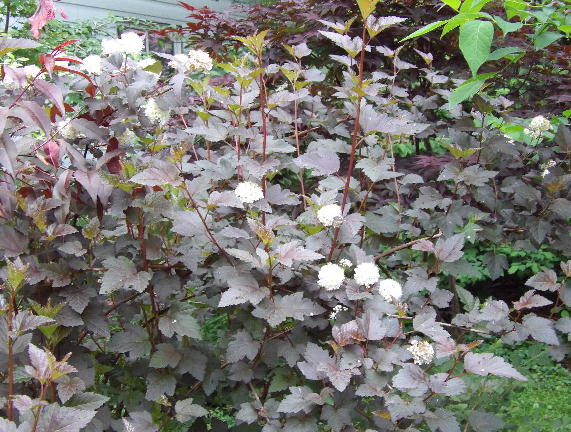
Monlo Ninebark
Physocarpus opulifolius ‘Monlo’
6 to 10 feet high and 6 to 8 feet wide
Full sun/partial shade
An upright spreading shrub with purplish-green leaves with deep notching. The more sun, the darker the purple coloring. Round clusters of small white flowers appear in summer. Older bark gets a stripped cinnamon color giving the appearance of multiple layers.
.
Emerald Green Arborvitae
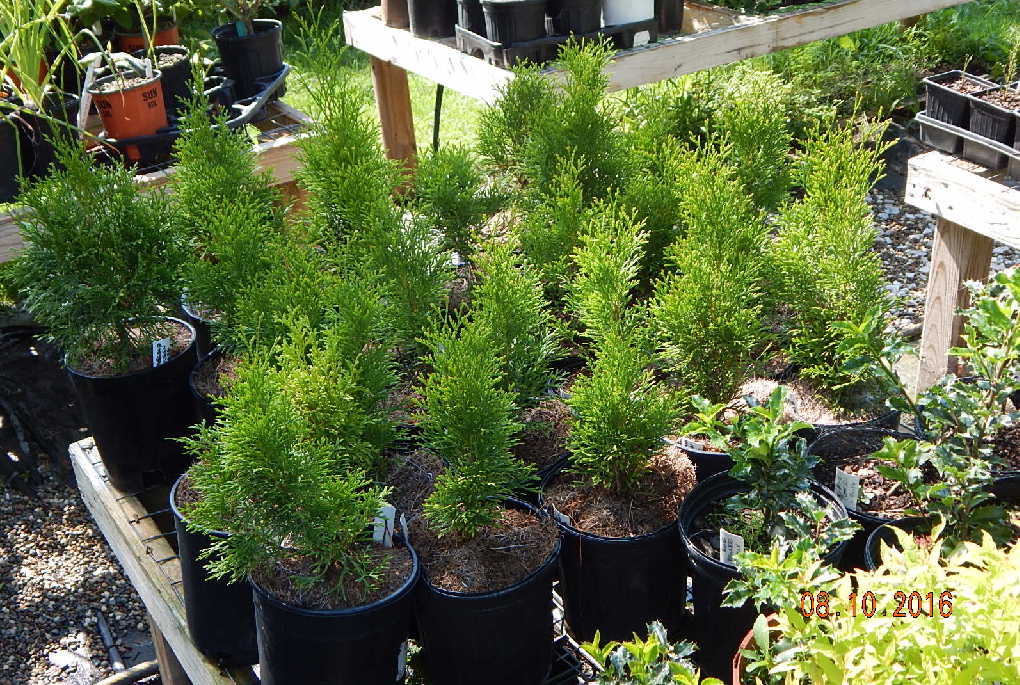
Emerald Green Arborvitae
Thuja occidentalis ‘Smaragd’
12 to 14 feet high and 3 to 4 feet wide
Full sun
Tall pyramidal growth of thick green scaly foliage.
Little Giant Arborvitae
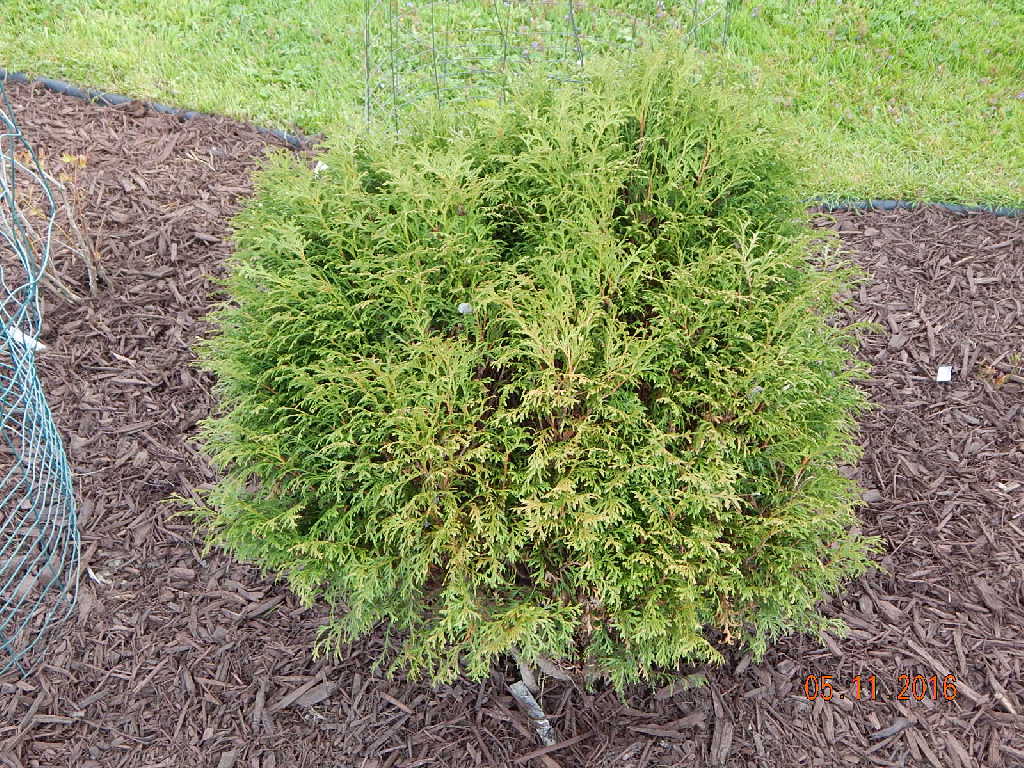
Little Giant Arborvitae
Thuja occidentalis ‘Little Giant’
3 to 4 feet high and 3 to 4 feet wide
Full sun/part shade
Smaller growth, green leaves that change toward purple in winter.
Green Giant Arborvitae
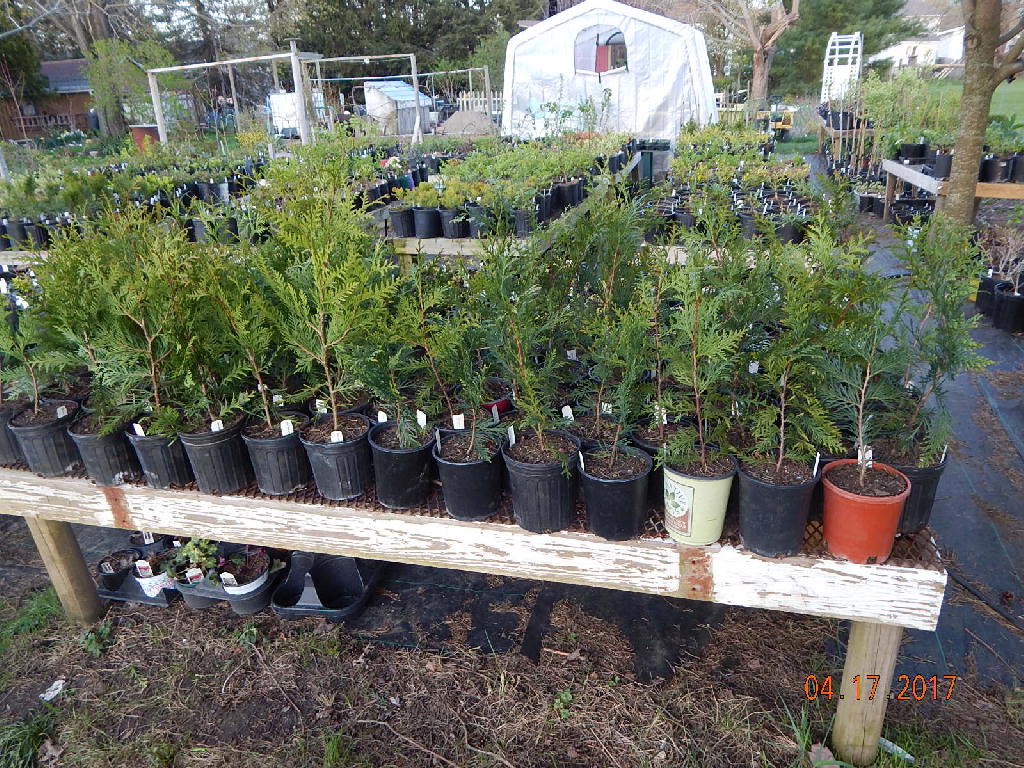
Green Giant Arborvitae
Thuja plicata x standishii ‘Green Giant’
25 to 30 feet high and 4 to 6 feet wide
Full sun/part shade
Fast-growing with more open branching. Popular for screening borders.
This is actually a cross of natives.
Ruby Slippers Oakleaf Hydrangea
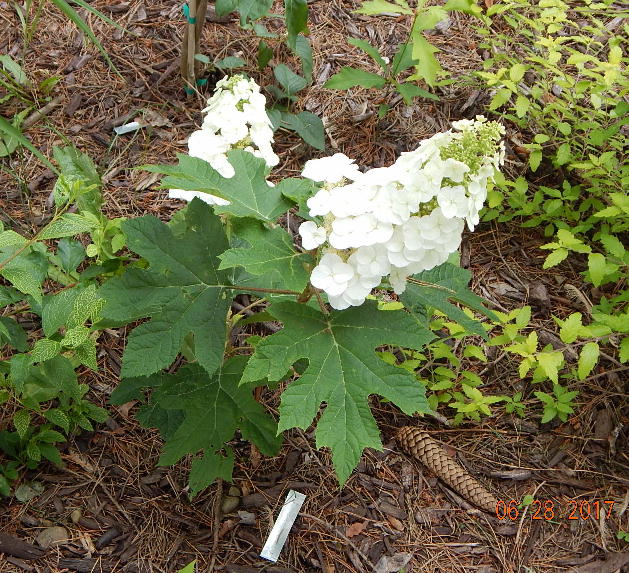
Ruby Slippers Oakleaf Hydrangea
Hydrangea quercifolia ‘Ruby Slippers’
3 to 4 feet high and 3 to 5 feet wide
Part sun/partial shade
Conical flower heads of white bloom in early summer. Fade to pinkish-red as they age. Large oak-like leaves.
Blue Rug Juniper
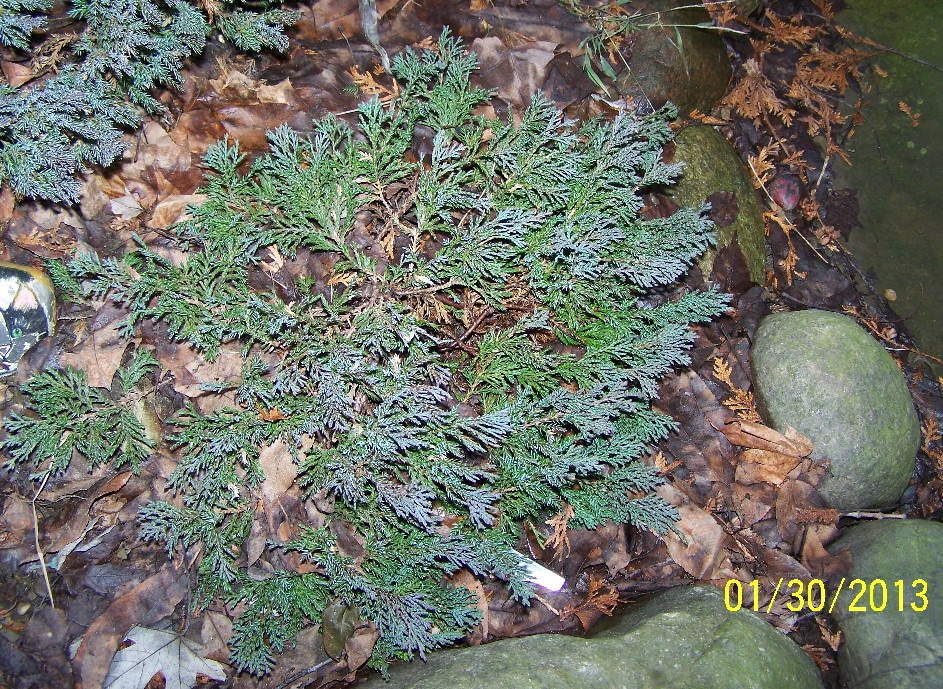
Blue Rug Juniper
Juniperus horizontalis ‘Wiltonii’
5 to 8 inches high and 5 to 7 feet wide
Full sun/partial shade
Very low growing groundcover with small green needles on stiff branches.
Goldfinger Potentilla
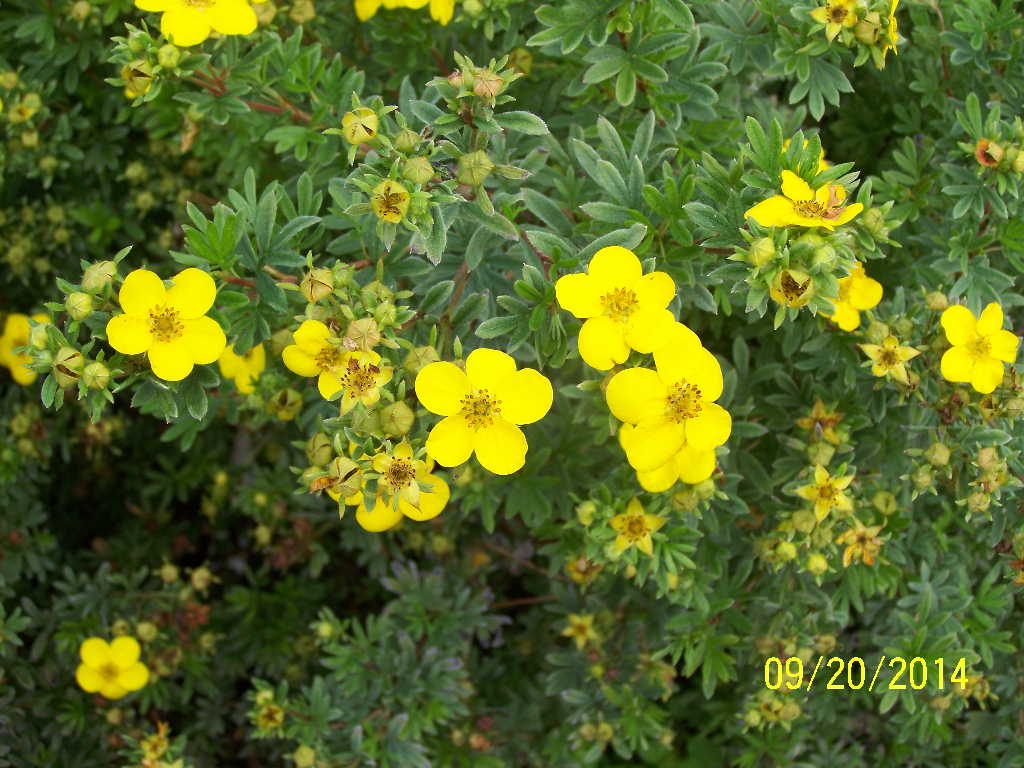
Goldfinger Potentilla
Potentilla fruticosa ‘Goldfinger’
2 to 3 feet high and 3 to 4 feet wide
Full sun/part shade
Bright yellow flowers and fine foliage. Larger flowers and darker green leaves
than Primrose Beauty.
Bridal Wreath Spirea
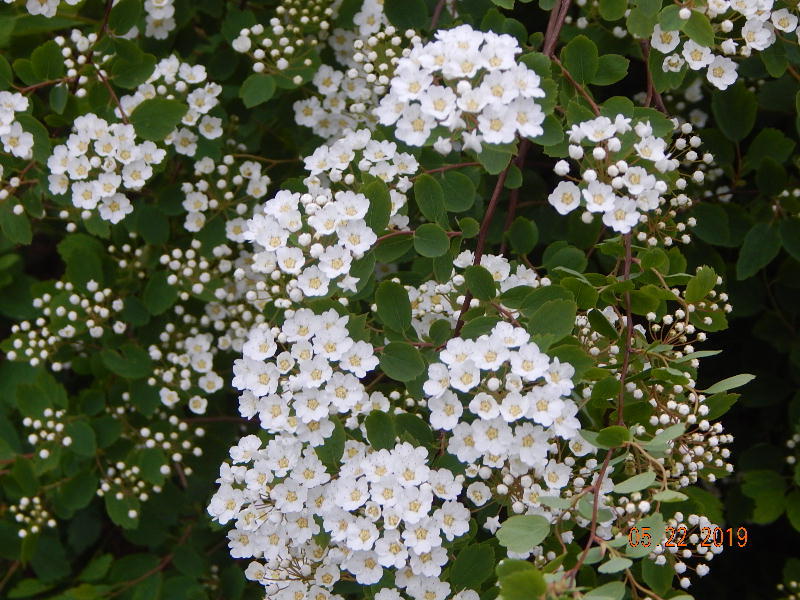
Bridal Wreath Spirea
Spiraea x vanhouttei
6 to 8 feet high and 6 to 8 feet wide
Full sun
Small dark green leaves on long arching branches. Small round clusters of white flower clusters in spring.
Alleghany Viburnum
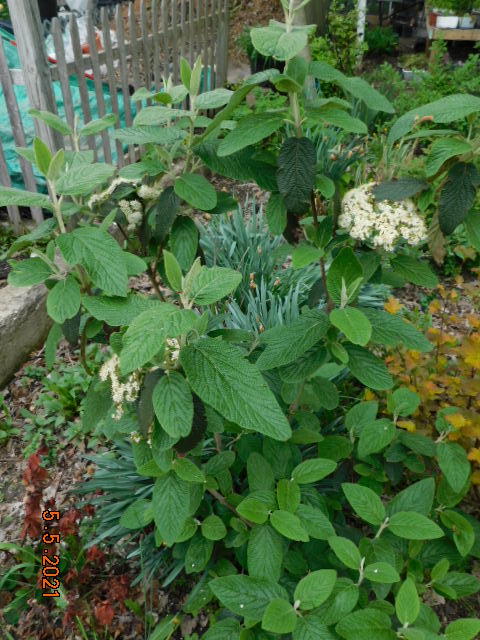
Alleghany Viburnum
Viburnum x rhytidophylloides ‘Alleghany’
8 to 10 feet high and 8 to 10 feet wide
Full sun/partial shade
Round fuzzy clusters of white flowers bloom in spring. Long narrow leaves have a thick and rough texture. This lends itself to be known as Leatherleaf Viburnum also.
Amethyst Falls Wisteria
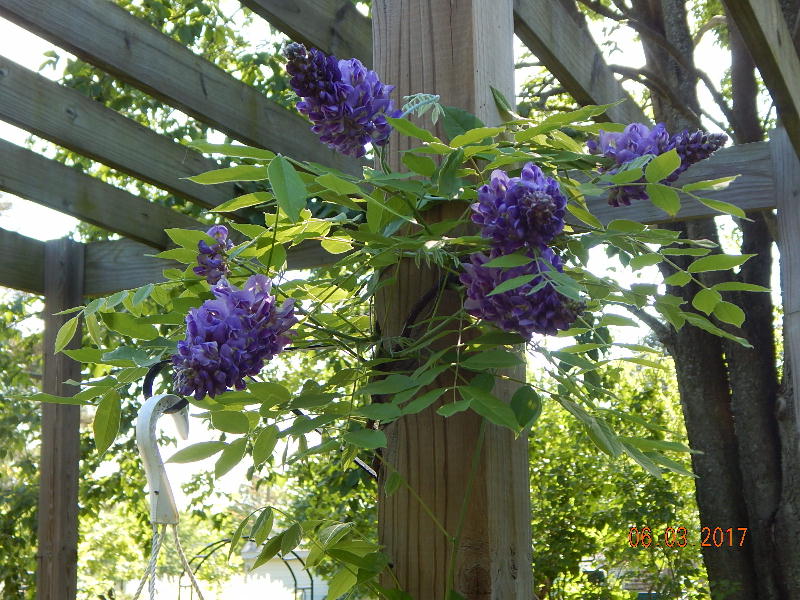
Amethyst Falls Wisteria
Wisteria frutescens ‘Amethyst Falls’
10 to 25 feet high and 3 to 5 feet wide
Full sun/partial shade
Late spring brings out small purple clusters of flowers on this climbing vine. Safer and lighter than the oriental varieties. Flowers at a very young age.
